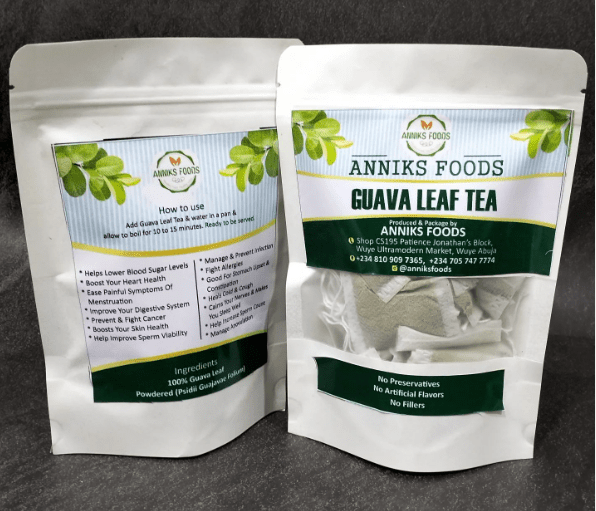Priscilla and Kimberly Addison are using bean-to-bar chocolate to celebrate the heritage of their ancestral home—and shift the conversation around a controversial crop.
Food is more than what’s on the plate. This is Equal Portions, a series by editor-at-large Shane Mitchell, investigating bigger issues and activism in the food world, and how a few good eggs are working to make it better for everyone.
“African art and culture are at the forefront of what we do,” says Priscilla Addison. “We want Ghana to be known for its chocolate, not just its cocoa beans.” Along with her younger sister Kimberly, she founded ‘57 Chocolate in 2016, when they relocated to the capital city of Accra to be closer to their parents.
“Craft chocolate like ours gives you an experience rather than just something sweet to munch on,” says Kimberly, who left her tempering room still wearing a hairnet to join our overseas video call. “And we’re trying to alter the narrative. There’s been lots of stigma against ‘Made in Africa’ products. We want to change people’s perceptions and prove that high quality can come out of the continent.”

Starting a bean-to-bar chocolate business in Ghana wasn’t the sisters’ original career trajectory. Kimberly, 31, studied French and international relations with a concentration in social justice at Boston College; Priscilla, 33, majored in French and international development, with a focus on food security, at Dickinson College in Pennsylvania. Both were interested in non-profit sectors addressing women’s education, human trafficking, value chains, and agriculture. But then a visit to one of Switzerland’s largest chocolate factories inspired their venture into confectionery.
“Work brought me to Geneva, where our parents were living at the time,” says Kimberly. “And my dad talked to us about entrepreneurship, and the potentials of going back to our native country.”
“I remember telling him, okay, when you officially retire, we’ll move back to Ghana with you. About two weeks before leaving, a group of friends from church invited me on a chocolate factory tour. Part of the exhibition was a display showing where beans were sourced—Ghana and Côte d’Ivoire—and that was the aha! moment.”
Once they returned to their homeland, the sisters started small. Really small. Roasting raw cacao with a standard kitchen oven in their Accra home. (Craft chocolatiers use the term “cacao” for the unfermented pod and beans, and “cocoa” after the fruit has been processed.)

“At the time, we were using a hairdryer for winnowing,” says Kimberly, referring to the process of removing the outer chaff from the cacao. “Rolling pins for crushing beans. We had our tabletop grinder, and needed a bowl and a spatula for tempering. When it comes to chocolate making it’s kind of like an orchestra: Not one piece of equipment is the most important, because they all do their part.”
Priscilla chimes in. “And electricity! We were getting up at three in the morning to use the machines because, initially, when we moved to Ghana, the lights would go off quite frequently.”
Early in the 19th century, Portuguese colonists introduced cacao, a tropical fruit from the Americas, as a cash crop on the island of São Tomé in the Gulf of Guinea, a transit point for ships engaged in the Atlantic slave trade. But it was a Ghanian agriculturalist named Tetteh Quarshie who is credited with bringing the pods to mainland West Africa around 1876. The export of cacao from the Gold Coast began by 1893; today, Ghana and neighboring Côte d’Ivoire produce nearly two-thirds of the global cocoa bean supply, in an industry worth more than $100 billion in annual sales. Most of this crop is dedicated to commodity chocolate: candy bars produced by multinational corporations like Hershey and Mars. While the cacao being raised on small-plot farms in equatorial Ghana usually winds up on supermarket shelves in Europe and North America, many of these growers had never tasted a chocolate bar themselves.
That is, until Kimberly and Priscilla Addison came back.
“Straight from the bat, we went to farmers,” says Kimberly. “Obviously, we hadn’t lived in Ghana for some time, so we explored in the field, and that’s how we started sourcing.”
Priscilla adds, “When Kim and I visit the farms now, we always bring bars of chocolate so that our business partners know what their cocoa is being used for.”

The cacao grown for ’57 Chocolate is interplanted with plantain and coconut trees on two small family farms, each less than three acres, in the Eastern and Western regions. (Hints of coconut are decidedly present when a chunk of the sisters’ dark chocolate melts on your tongue.) The beans are sun-dried and fermented before arriving in Accra. Additional drying takes place at the ’57 Chocolate facility, which now employs 10 people in a larger production space, where the Addisons currently produce about 1,000 bars per week. Kimberly’s favorite is the dark chocolate bar with sea salt; Priscilla’s go-to is milk chocolate with almonds and sea salt, or sometimes the moringa-flavored white chocolate with toasted coconut. They also make bite-size pieces stamped with Adinkra symbols, visual representations of philosophical ideas at the core of life in Ghana. Duafe, a wooden comb, stands for femininity and beauty. Denkyem, the crocodile, represents cleverness. Aya, a fern, means independence; the ’57 in the company’s name refers to the year Ghana became a republic, breaking away from British colonial rule. The Addisons are also in the process of developing their own farm to build a stronger supply chain for Pan-African chocolate.
Knowing where your food comes from is a vital part of educated consumption, especially when it comes to chocolate. A forced-labor suit currently awaiting an opinion in the U.S. Supreme Court alleges two major American food conglomerates—Nestlé USA and Cargill—knowingly aided and abetted human rights violations for profit in the West African cocoa supply chain. The U.S. Department of Labor’s Bureau of International Labor Affairs estimates that up to 1.56 million children may be engaged in hazardous work on cacao farms in Ghana and Côte d’Ivoire alone. Some experts believe helping farmers out of poverty is a key part of the solution, and last year the two West African governments established a benchmark premium for cacao futures, intended to increase prices to enable growers to send their children to school rather than work in the fields. Big Chocolate doesn’t like the price hike, but which mass market or artisan candy bar makers want to be accused of child enslavement or other exploitative practices?
Accountability is a core value for the Addisons, along with other bean-to-bar makers practicing sustainable farming and direct trade ethics in Africa. Some include Beyond Good in Uganda and Madagascar,and MonChoco Artisan Chocolatier in Côte d’Ivoire. Kokoa Kamili collaborates with 2,000 small-hold farmers in the Kilombero Valley of Tanzania’s Morogoro Region to supply raw organic cacao to international bar makers like Original Beans.
We want to revive our country’s consciousness of taking natural resources and transforming them into finished products. So that’s exactly what we’re doing with the cacao bean, and we wanted to inspire the youth to continue to do the same.”
Priscilla Addison
“When we first arrived, there were a lot of European chocolates in stores here,” says Priscilla. “A lot of people thought those were superior. We want to revive our country’s consciousness of taking natural resources and transforming them into finished products. So that’s exactly what we’re doing with the cacao bean, and we wanted to inspire the youth to continue to do the same.”
One of their most compelling Adinkra chocolates is stamped with the Sankofa bird, its beak arched towards its tail feathers. This imagery is closely associated with the proverb: “Se wo were fi na wosankofa a yenkyi.” (It is not wrong to go back for that which you have forgotten.)
Or, for the Addison sisters, returning home to grow the future they envision.

















